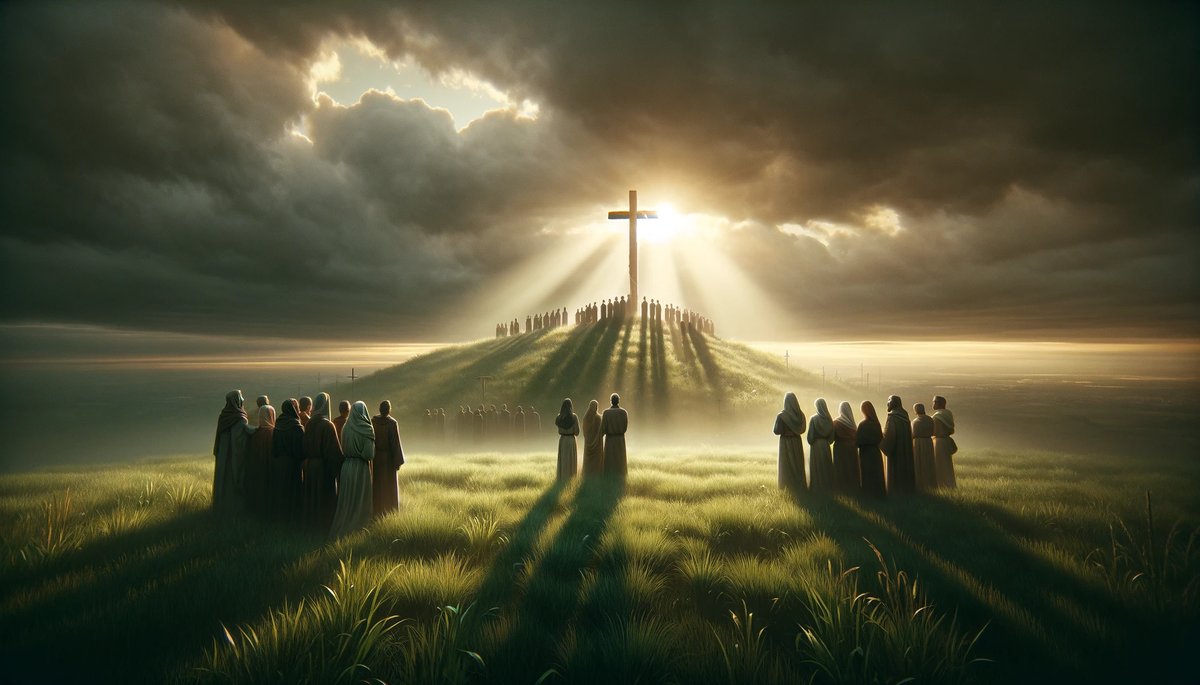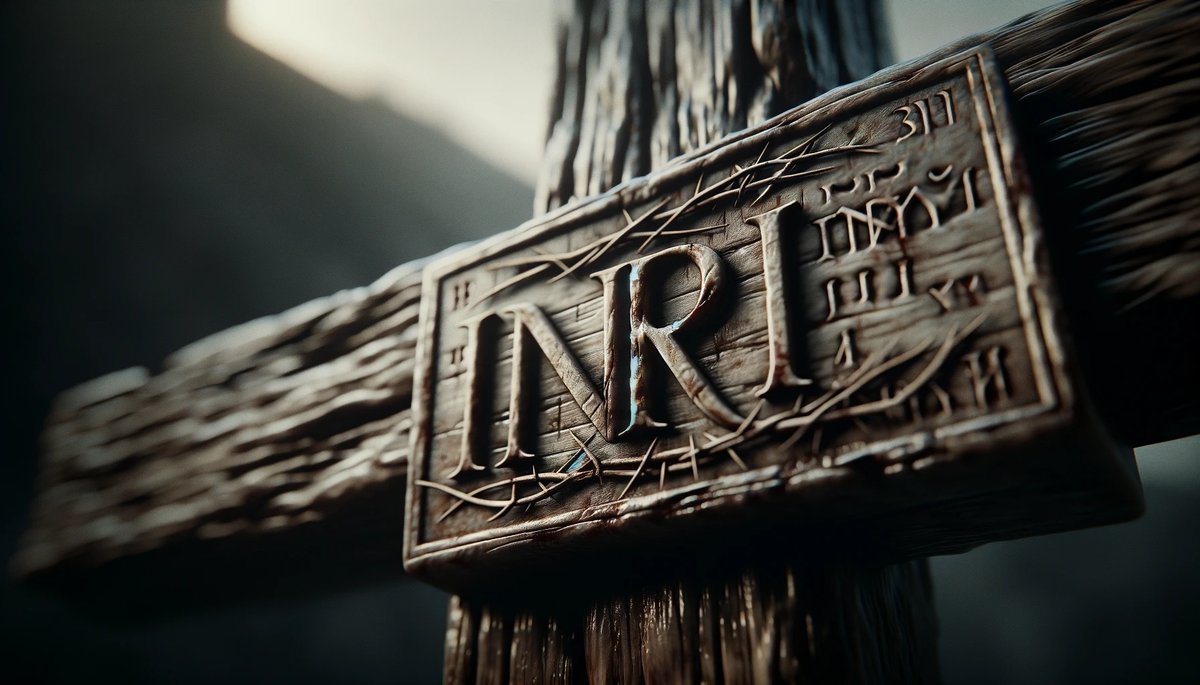Home>Theology and Spirituality>How To Make Sign Of The Cross Lutheran


Theology and Spirituality
How To Make Sign Of The Cross Lutheran
Published: March 3, 2024
Jason DeRose, Managing Editor at Christian.net, uses his expertise in religion and journalism to deepen understanding of faith's societal impacts. His editorial leadership, coupled with a strong academic background, enriches the platform’s diverse content, earning him recognition in both journalism and religious circles.
Learn how to make the sign of the cross in the Lutheran tradition and explore its significance in theology and spirituality. Discover the rich history and practice of this sacred ritual.
(Many of the links in this article redirect to a specific reviewed product. Your purchase of these products through affiliate links helps to generate commission for Christian.net, at no extra cost. Learn more)
Table of Contents
Introduction
Have you ever wondered about the significance of the Sign of the Cross in the Lutheran tradition? Making the Sign of the Cross is a common practice in many Christian denominations, but its meaning and method can vary. In this article, we will explore the Lutheran perspective on this ancient ritual and provide a step-by-step guide on how to make the Sign of the Cross in the Lutheran Church. Understanding the history and significance of this practice can deepen our appreciation for its role in Lutheran worship and spirituality.
Read more: Why Is The Sign Of The Cross Used In Baptism
Understanding the Sign of the Cross in Lutheran Tradition
The Sign of the Cross holds a significant place in Lutheran tradition, serving as a visible symbol of faith and a reminder of Christ's sacrifice. In the Lutheran Church, the Sign of the Cross is seen as a way to mark oneself as belonging to Christ and to invoke the presence of the Holy Trinity. It is a physical and spiritual act that connects the believer to the core tenets of the Christian faith. The Lutheran perspective emphasizes the centrality of Christ's death and resurrection, and the Sign of the Cross serves as a tangible expression of this foundational belief.
The Sign of the Cross is made by tracing a cross on oneself, typically by touching the forehead, chest, and then each shoulder. This action symbolizes the believer's identification with Christ's crucifixion and victory over sin and death. In Lutheran tradition, the Sign of the Cross is often accompanied by the words "In the name of the Father, and of the Son, and of the Holy Spirit," further reinforcing the Trinitarian nature of the gesture. This practice is rooted in the early Christian church and has been preserved in Lutheran worship as a powerful expression of faith and devotion.
Lutherans view the Sign of the Cross as a form of prayer and blessing, invoking the presence and protection of God. It is a physical embodiment of the believer's faith and a means of seeking God's grace and guidance. The act of making the Sign of the Cross is a deeply personal and communal expression of faith, connecting individuals to the broader body of believers and to the historical continuity of the Christian faith. In Lutheran tradition, the Sign of the Cross is not seen as a superstitious ritual, but rather as a profound symbol of Christ's redemptive work and the believer's union with Him.
Understanding the significance of the Sign of the Cross in Lutheran tradition provides insight into the rich tapestry of Lutheran spirituality and worship. This practice serves as a visible and tangible expression of the core beliefs of the Lutheran faith, reinforcing the centrality of Christ and the Triune God in the life of the believer. The Sign of the Cross is a powerful reminder of God's presence and a means of grace in the Lutheran tradition, embodying the deep spiritual connection between the believer and the divine.
Steps to Making the Sign of the Cross in the Lutheran Church
-
Begin with the Forehead: To make the Sign of the Cross in the Lutheran Church, start by touching your forehead with your right hand. This action symbolizes the presence of God in your thoughts and intellect, acknowledging the role of the Father in the Trinity.
-
Move to the Chest: After touching your forehead, bring your hand down to your chest, signifying the indwelling of God in your heart and soul. This step emphasizes the significance of the Son, Jesus Christ, in the believer's life and spiritual journey.
-
Proceed to the Shoulders: From your chest, move your hand to your left shoulder, then to your right shoulder, forming the shape of a cross. This action represents the work of the Holy Spirit in guiding and empowering the believer. It also serves as a reminder of Christ's sacrifice on the cross and the believer's identification with His redemptive work.
-
Accompany with Trinitarian Invocation: While making the Sign of the Cross, it is common in Lutheran tradition to verbally invoke the name of the Father, the Son, and the Holy Spirit. This verbal affirmation reinforces the Trinitarian nature of the gesture and underscores the believer's faith in the Triune God.
-
Reflect on the Meaning: As you make the Sign of the Cross, take a moment to reflect on its profound significance. Consider the sacrificial love of Christ, the grace of God, and the presence of the Holy Trinity in your life. This act of reflection deepens the spiritual impact of the gesture and fosters a sense of reverence and gratitude.
-
Practice Reverently and Intentionally: Making the Sign of the Cross in the Lutheran Church is a deeply meaningful and intentional practice. Approach this gesture with reverence and mindfulness, recognizing its role as a visible expression of faith and a means of seeking God's presence and blessing.
By following these steps, individuals can engage in the practice of making the Sign of the Cross in the Lutheran Church with a deeper understanding of its spiritual significance and theological implications. This ritual serves as a powerful expression of faith and a tangible reminder of the believer's connection to the Triune God.
Importance of the Sign of the Cross in Lutheran Worship
The Sign of the Cross holds profound importance in Lutheran worship, serving as a visible and tactile expression of faith, devotion, and theological truth. In the context of Lutheran worship, the Sign of the Cross is a powerful symbol that encapsulates the core tenets of the Christian faith and the Lutheran tradition. Its significance can be understood through several key aspects:
1. Symbol of Faith and Identity
The act of making the Sign of the Cross in Lutheran worship serves as a visible marker of one's faith and identity as a follower of Christ. By tracing the sign of the cross on oneself, believers publicly affirm their allegiance to Christ and their participation in the redemptive work of the Triune God. This symbolic gesture reinforces the believer's connection to the larger Christian community and their commitment to living out the teachings of Jesus Christ.
Read more: How To Become A Lutheran
2. Invocation of the Holy Trinity
In Lutheran theology, the Sign of the Cross is intimately linked to the doctrine of the Holy Trinity – the belief in one God existing in three persons: the Father, the Son, and the Holy Spirit. By making the Sign of the Cross while invoking the names of the Father, the Son, and the Holy Spirit, believers acknowledge and honor the Triune nature of God. This act of invocation serves as a reminder of the foundational truth of God's triune identity and the believer's relationship with each person of the Trinity.
3. Connection to Christ's Sacrifice and Victory
The Sign of the Cross in Lutheran worship is a tangible representation of Christ's sacrificial death on the cross and His victory over sin and death through His resurrection. By physically tracing the shape of the cross on themselves, believers participate in and affirm their union with Christ's redemptive work. This act serves as a continual reminder of the centrality of Christ's atoning sacrifice and the hope found in His resurrection, shaping the worship experience and fostering a deep sense of gratitude and reverence.
4. Expression of Prayer and Blessing
In Lutheran worship, the Sign of the Cross is often used as a form of prayer and blessing. Believers may make the sign over themselves, others, or specific objects as a means of invoking God's presence, protection, and grace. This practice underscores the belief in the power of God's blessing and the significance of seeking divine favor and guidance. The act of making the Sign of the Cross becomes a tangible expression of the believer's reliance on God and a means of seeking His blessing in various aspects of life and worship.
5. Continuity with Christian Tradition
The Sign of the Cross has been a longstanding tradition in Christian worship, dating back to the early centuries of the church. In Lutheran worship, this practice reflects a connection to the historical and liturgical continuity of the Christian faith. By engaging in this ancient ritual, believers participate in a tradition that spans centuries and transcends cultural and denominational boundaries, emphasizing the unity of the body of Christ across time and space.
In Lutheran worship, the Sign of the Cross holds multifaceted significance, encompassing elements of faith, identity, theology, and tradition. Its presence in the worship experience serves to deepen the spiritual connection between believers and the Triune God, reinforcing the foundational truths of the Christian faith, and fostering a sense of reverence, gratitude, and communal unity.
Read more: How Long Is A Lutheran Funeral
Common Misconceptions about the Sign of the Cross in Lutheran Practice
-
Exclusive to Catholicism: One common misconception is that the Sign of the Cross is solely a Catholic practice and has no place in Lutheran tradition. In reality, the Sign of the Cross has historical roots in early Christianity and is embraced by various Christian denominations, including Lutheranism. While the emphasis and theological interpretation of the gesture may differ, the Sign of the Cross holds significance in Lutheran worship as a visible expression of faith and a means of invoking the presence of the Holy Trinity.
-
Superstitious or Magical: Another misconception is that making the Sign of the Cross is a superstitious or magical act, devoid of spiritual meaning. In Lutheran practice, the Sign of the Cross is not viewed as a ritualistic formula for manipulating divine forces, but rather as a profound symbol of faith, prayer, and blessing. It serves as a visible embodiment of the believer's connection to Christ and the Triune God, emphasizing the centrality of Christ's redemptive work and the believer's reliance on God's grace.
-
Mechanical Gesture: Some may perceive the Sign of the Cross as a mechanical or rote gesture devoid of personal significance. However, in Lutheran practice, the Sign of the Cross is intended to be a deliberate and intentional act of faith. When made reverently and with understanding, it becomes a powerful expression of the believer's identity, devotion, and reliance on the Triune God. It serves as a visible reminder of the core tenets of the Christian faith and the believer's union with Christ.
-
Exclusively for Worship Settings: There is a misconception that the Sign of the Cross is only relevant within the context of formal worship and has no place in everyday life. In Lutheran understanding, the Sign of the Cross can be a meaningful and relevant practice in various aspects of the believer's life. It can serve as a personal expression of faith, a source of comfort and strength in times of challenge, and a means of seeking God's presence and blessing in daily endeavors.
-
Divisive or Controversial: Some individuals may perceive the Sign of the Cross as a divisive or controversial practice within the Lutheran tradition. However, while there may be theological diversity within Lutheranism regarding the emphasis and frequency of making the Sign of the Cross, it is not inherently divisive. The practice is rooted in the historical and theological richness of the Christian faith and serves as a unifying symbol of the believer's connection to Christ and the Triune God.
Addressing these misconceptions provides clarity on the significance and relevance of the Sign of the Cross in Lutheran practice. Understanding the theological and spiritual depth of this practice can foster a deeper appreciation for its role in shaping the faith, worship, and spiritual journey of Lutheran believers.
Conclusion
In conclusion, the Sign of the Cross holds a profound and multifaceted significance in Lutheran tradition, serving as a visible and tangible expression of faith, devotion, and theological truth. Understanding the theological underpinnings and spiritual implications of this practice enriches the worship experience and deepens the believer's connection to the Triune God. By tracing the sign of the cross on oneself and verbally invoking the names of the Father, the Son, and the Holy Spirit, believers in the Lutheran Church affirm their identity as followers of Christ and their reliance on God's grace and presence. The Sign of the Cross serves as a continual reminder of Christ's sacrificial love, His victory over sin and death, and the believer's union with Him. It is a practice that transcends the boundaries of formal worship, offering a means of prayer, blessing, and spiritual reflection in everyday life. Embracing the Sign of the Cross in Lutheran tradition underscores the enduring richness of Christian worship and spirituality, fostering a sense of communal unity, reverence, and gratitude.












